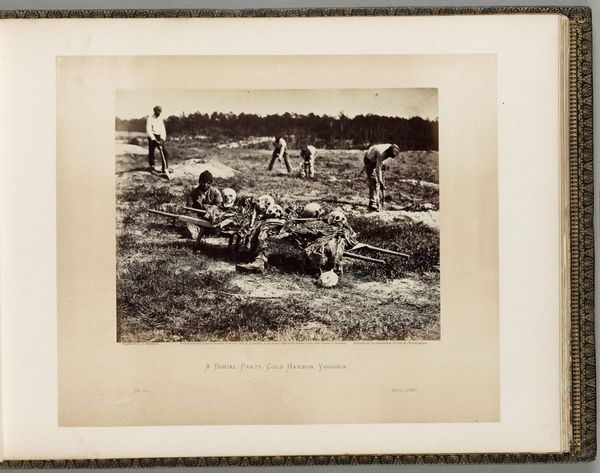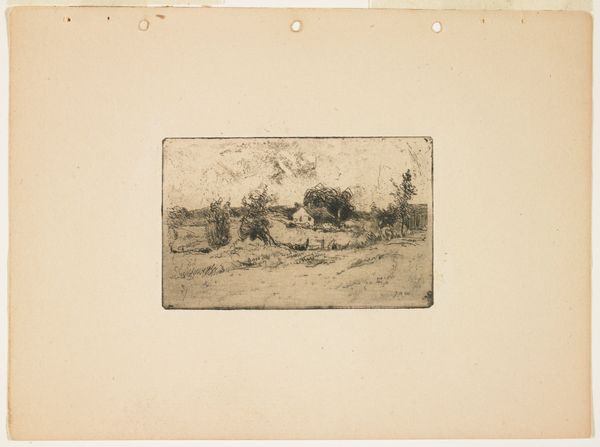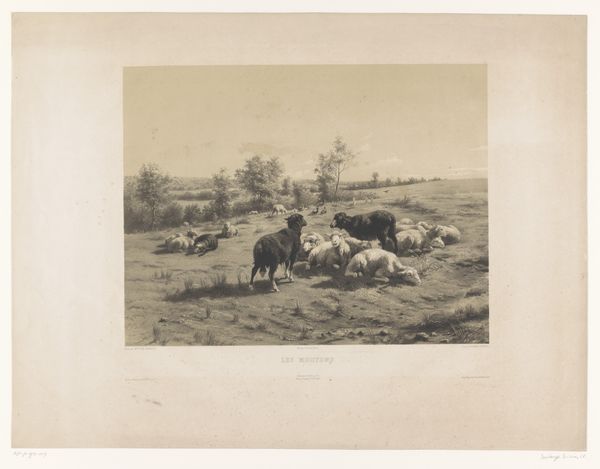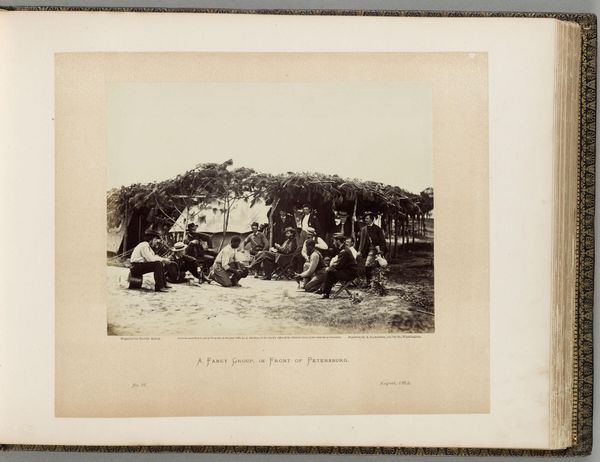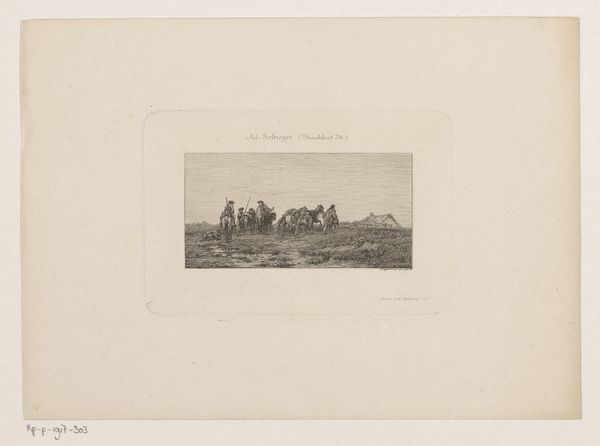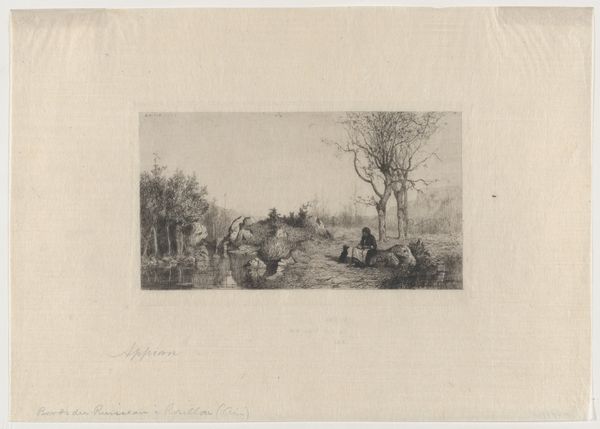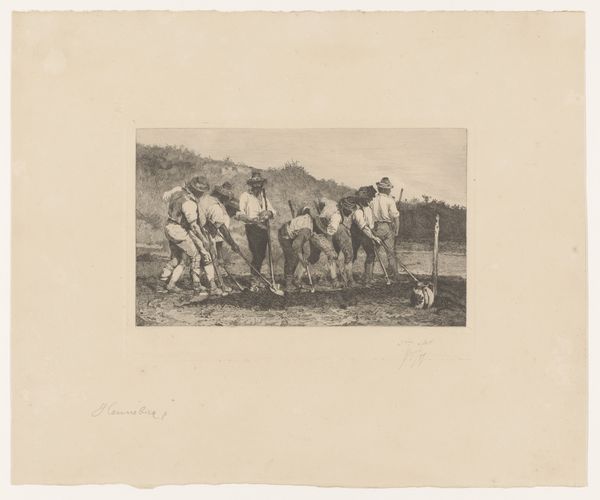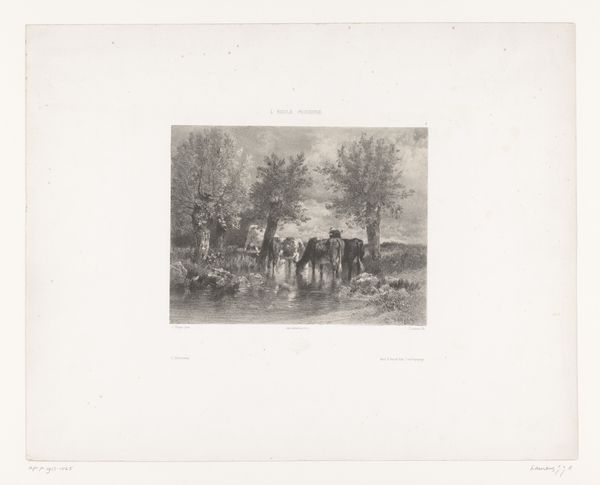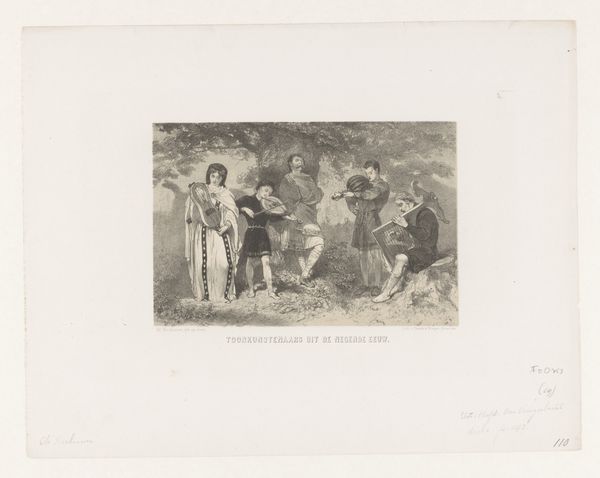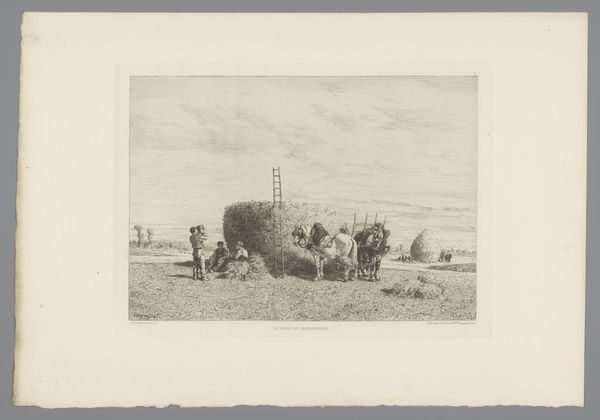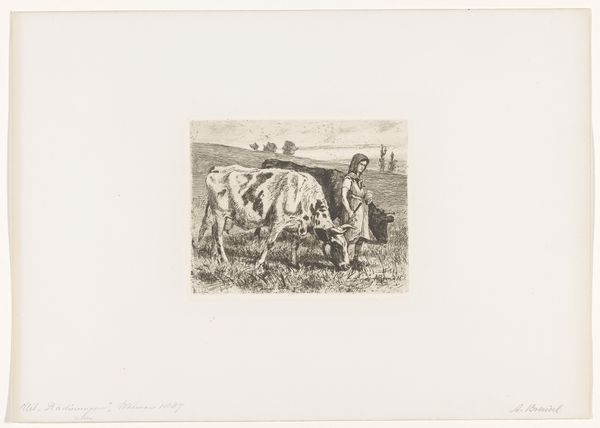
Dimensions: height 72 mm, width 150 mm, height 222 mm, width 310 mm
Copyright: Rijks Museum: Open Domain
Curator: Camille Pissarro created "Boeren op het land aan het werk"—"Farmers Working in the Field"—in 1891. It’s an etching, a form of printmaking. Looking at this small rectangle depicting rural life... well, what’s your first gut feeling about it? Editor: It feels...rooted. Almost literally! I see the backs of these figures, bent, connected to the land, with that rustic farm and the blurry impressionistic field. You can almost smell the dirt. There's a sense of exhaustion and connection all at once. Curator: Absolutely. Consider the social context here: Pissarro consistently engaged with depictions of the working class, and this print emphasizes labor—specifically, agrarian labor—as fundamental. We can see here how representations of rural communities often play into broader political discourses, particularly when dealing with concepts like nationhood and identity. Editor: That resonates. The hazy atmosphere, almost like heat radiating from the ground… It really personalizes the act of labor for me. Did Pissarro come from this world, or was he more of an observer, do you think? Curator: Pissarro himself came from a privileged background, but aligned himself politically with anarchist thinkers. He was interested in documenting these workers, though his gaze could sometimes be idealized, of course. There's that complicated tension, isn't there, of an outsider trying to represent insider experiences. His commitment to depicting rural life reflects the artistic trends of his time, yet he brought a sensitivity towards labor that invites us to look at these farmers as more than just symbols. Editor: You can definitely see that tenderness there, particularly in the etching lines and their subtle details. Curator: He treats these figures not as romantic ideals, but as participants in economic activity. Pissarro makes a statement here. In what ways do you see such art participating in conversations surrounding equality and working conditions, which are still, obviously, current and pertinent? Editor: Well, seeing this piece… you're reminded that our food has to come from somewhere. People break their backs making that happen! Maybe it invites a little more respect, a bit more connection. That's my honest gut reaction, anyway. Curator: It truly encapsulates so many ideas that remain incredibly poignant. I'm constantly discovering new layers. Editor: Me too! These are faces, backs and histories. That's what will remain with me.
Comments
No comments
Be the first to comment and join the conversation on the ultimate creative platform.

